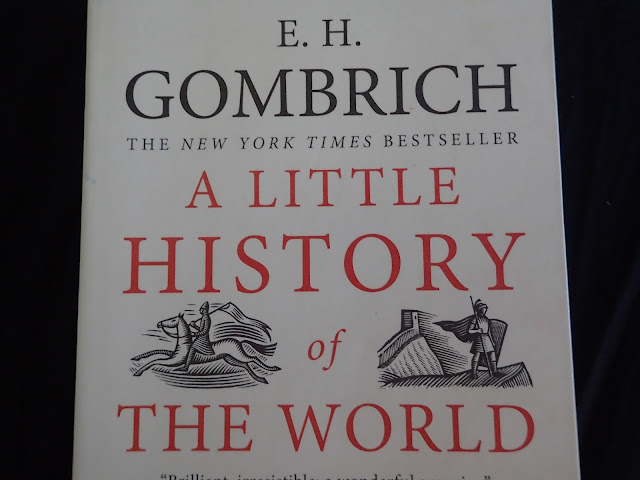 |
| (Did Bernini use a fork?) |
Two years ago, right before starting this blog, I had another project that I will, I hope, be working on for the rest of my life. My notes are labelled "The History of Everything." There's a couple of things I know a fair amount about, like when and where a painting I have never seen before is likely to be from, and why does it look the way it does, and how to encourage the development of beta crystals in melted chocolate. Then I realized if I hear a piece of classical music, I know a lot less. Also, I realized other gaps, like even though I knew the date of the first publishing of Pride and Prejudice, the arguably more significant event the battle of Waterloo was, embarrassingly, without a firm date in my mind (1815, just two years after the book. When you know that, then you wonder, could they see it coming in that whirlwind of officers' balls? It adds a layer of poignance.)
When I was young my dad would read to me passages from Braudel's The Structures of Everyday Life. We went to the museum a lot. Paintings were windows on the curiously well -appointed worlds of the past (the cuffs, the corsets, the hairstyles). Forks were not commonly a part of this world, until perhaps the 1750's. That's the kind of thing I mean- how everything fits together. I started the project because I became overwhelmed by the sheer volume of things I don't know, the things I couldn't put together. You need to know a little about everything to see it: you've got Bach, you've got these crazy tall wigs, and you have no... fork? The more you know, the more you want to know- you want to see how everything connects, or, as in the case of the fork, doesn't. I grew up analogue- the instant, demi-faux intellectual gratification of the internet is just not going to do it.
 |
| The Minotaur and the Maiden, via Jean Cocteau |
In the SF MOMA giftshop at SFO last year I picked up a small book, chosen because it was not heavy (literally), and because it was by Ernst Gombrich, author of The Story of Art, beloved reference book of our full year Survey of Western Art course (Art 100) at Smith. Master of historical survey, I thought it wonderful he could approach an endless topic in such a small volume.
Well, he can and he does, in plain language, without undue complications, and with quite a lot of whimsy. It's quite a page turner. A Little History of the World is a children's book. I'm very glad I did not realize this, because I probably wouldn't have bought it if I had.
I could say Ernst Gombrich is a great story teller- and he is- but then it's a pretty great story. He acquaints us with currents in thought- Aristotle, Confucius, Lao Tzu, Marcus Aurelius- crediting the reader with an ability to grasp a graspable thing. Life imitates art as we follow conquests of mythical proportions by very real conquerors. Dates, tiresome in school history, become really useful and interesting- illuminating connections between events rather than clouding the mind. The geography of the world fills with horses (even elephants!), as centuries fill with meaningful, memorable events.
Most of these events and protagonists and thoughts will be familiar, but many of us first learned them when they seemed less compelling than parties and concerts and the mysterious cute guy in math class who just moved down from Westchester.
This is a light, fast, rewarding book, whatever your knowledge of history. The weight of the subject is lightened by its handling. Absorbing as it is, you can read it in fragments, like on the bus to the beach, or drying out on a blanket between swims. The fragments of remembered history become pieces on a puzzle, locking into place. That makes pretty much everything a little more enjoyable.
This is a light, fast, rewarding book, whatever your knowledge of history. The weight of the subject is lightened by its handling. Absorbing as it is, you can read it in fragments, like on the bus to the beach, or drying out on a blanket between swims. The fragments of remembered history become pieces on a puzzle, locking into place. That makes pretty much everything a little more enjoyable.


No comments:
Post a Comment